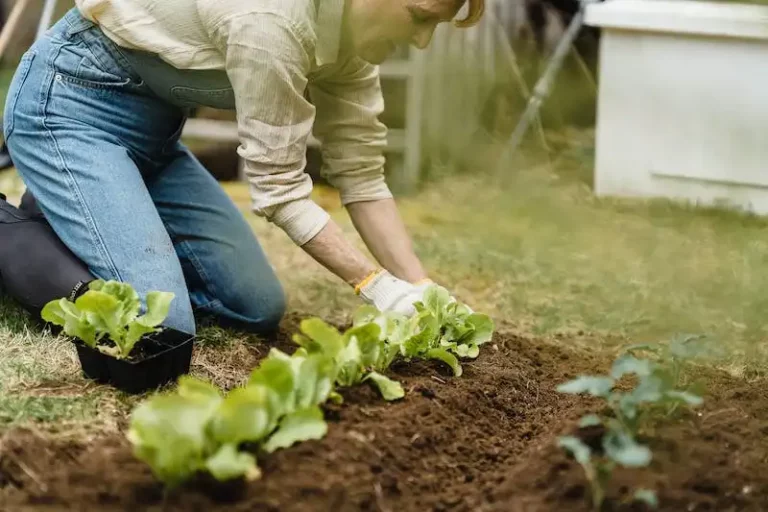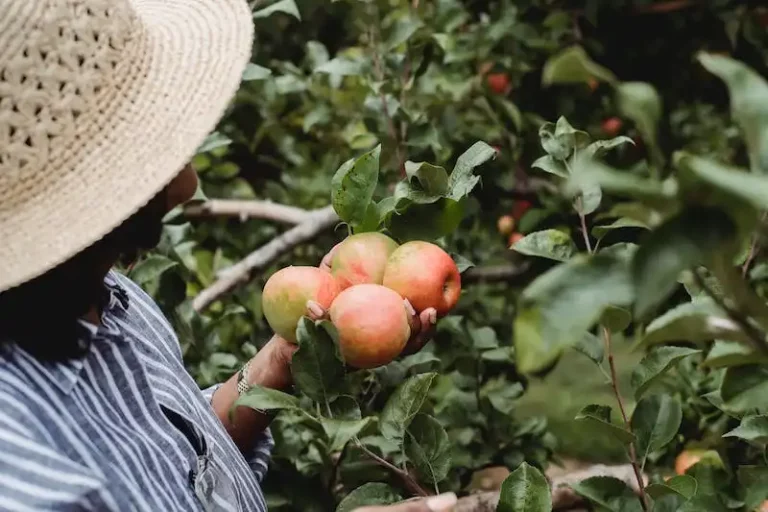Winter lettuce is a cool-weather crop that can be planted in the summer and grown throughout the colder months. Unlike its summer counterpart, winter lettuce seeds don’t mind the cold and actually thrive in it. There are many varieties of winter lettuce to choose from, ranging from the small and pungent Paris head to the large and late-flavoured Romaine. Some varieties, like the narrow and rosette-shaped varieties, are best for harvesting young, while others, like the southern varieties, can be grown all winter long.
One of the advantages of winter lettuce is that it takes up very little space. When planted in between other winter crops, such as kale or mustard, it can help make the most of a small garden. Winter lettuce also thrives in cold frames, which can be especially useful in areas that experience heavy frost or windy conditions.
When growing winter lettuce, it’s important to find a sunny spot in the garden, as these vegetables need as much light as they can get during the shorter winter days. The soil should be well-drained and rich in organic matter. It’s also a good idea to clip back any tall plants or trees that may shade the lettuce and keep it from getting the sunlight it needs.
Winter lettuce can be harvested as baby lettuce or left to grow into full-sized heads. Baby lettuce is harvested when the leaves are young and tender, usually about 4 to 6 weeks after planting. Full-sized heads can be harvested when they reach their mature size, which is typically between 8 and 12 weeks after planting. To harvest, simply cut the lettuce at the base of the plant, leaving about an inch of stem attached.
In colder regions, it’s a good idea to cover winter lettuce with a cloche or row cover at night to protect it from frost. If you live in a predominately mild-flavoured and mild winter climate, you can leave the lettuce outside and harvest it as needed throughout the winter months. If you have extra lettuce that you can’t use right away, it can be stored in the fridge for up to a week.
Now that you have a guide on how to grow winter lettuce, it’s time to get started. Line your garden beds with these cold-loving greens and enjoy fresh, flavorful lettuce even in the coldest months of the year.
Growing Lettuce in the Fall Early Winter
In September, as the summer heat begins to wane, it is the perfect time to start growing lettuce in your garden. Lettuce is a cool-season crop that can be grown throughout the fall and early winter months, especially in the southern regions where the winters are very mild.
Lettuce can be planted directly in the ground or in containers. Gardeners have different preferences when it comes to planting lettuce. Some prefer to sow lettuce seeds directly into the garden soil, while others prefer to start seedlings indoors and transplant them into the garden. If you choose to start seedlings indoors, you can do so about 4-6 weeks before the first expected frost in your area.
When planting lettuce, it is important to choose a variety that is suitable for the fall and early winter weather. Most lettuce varieties are cold-tolerant and can withstand light frosts. Some popular varieties include romaine, green leaf, and red leaf lettuce. You can also experiment with other cold-tolerant greens like kale, mustard, and endive.
To start growing lettuce, prepare the soil by removing any weeds and adding compost or well-rotted manure to enrich the soil. Lettuce prefers a well-draining soil, so make sure the soil is loose and not compacted. If you have heavy clay soil, consider adding some sand or organic matter to improve drainage.
Once the soil is prepared, you can sow the lettuce seeds directly into the ground or containers. Simply sprinkle the seeds evenly over the soil and lightly press them into the soil. Cover the seeds with a thin layer of soil or compost, and water gently. Keep the soil consistently moist during the germination and growth stages to ensure healthy seedlings.
One of the advantages of growing lettuce in the fall and early winter is that you can also use season extension techniques like cold frames or row covers to protect the plants from freezing temperatures. These structures help create a narrow microclimate around the plants, providing them with some protection from harsh weather conditions.
Lettuce can be harvested at various stages of growth, depending on your preferences. If you prefer baby lettuce, you can start harvesting the leaves when they are small and tender. For full heads of lettuce, wait until the plants have matured and the heads have formed. Harvest lettuce in the morning when the leaves are crisp and refreshing.
Growing lettuce in the fall and early winter can be a welcome addition to your garden. While most lettuces have a mild-flavored taste, certain varieties like romaine and endive have more earthy or slightly bitter flavors. Experiment with different varieties to find the ones that suit your palate. Enjoy fresh and nutritious lettuce throughout the autumn season!
In This Article
In this article, you will find information on how to grow winter lettuce on the coast. You’ll learn about the advantages of growing lettuce during the cold season, the different varieties you can choose from, and the steps you need to take to ensure a successful harvest. Whether you have a greenhouse or a small plot of land, you can easily grow winter lettuce and enjoy its refreshing flavors in your salads.
1. Why grow winter lettuce? – Discover the benefits of growing lettuce in the winter, including the ability to have fresh salads all year round and the fact that winter lettuce thrives in cooler temperatures.
2. Choosing the right varieties – Learn about the different types of lettuce that can be grown in the winter, including romaine, endive, and mustard lettuce. Find out which varieties are best suited for your growing conditions and taste preferences.
3. Planting winter lettuce – Find out when and how to plant your winter lettuce seeds. Learn about the germination process and how to ensure that your seeds have access to enough light and moisture to grow successfully.
4. Caring for your winter lettuce – Discover the best practices for taking care of your winter lettuce crops, including watering, fertilizing, and protecting them from pests and diseases. Learn about the cut-and-come-again method that allows you to harvest the outer leaves while leaving the plant to continue growing.
5. Harvesting and enjoying your winter lettuce – Learn how to know when your winter lettuce is ready to be harvested. Find out the best time of day and the best technique for cutting your lettuce to ensure it stays fresh and tasty.
By following the tips and advice in these articles, you’ll be able to grow winter lettuce all year round and enjoy its tender and flavorful leaves in your salads. Whether you’re a beginner or an experienced gardener, growing winter lettuce is a great way to make the most out of your garden space and enjoy fresh produce even during the colder months. Happy growing!
Advantages of growing lettuce in the Fall
In the cool-weather months of fall, lettuce thrives and can be a great addition to your garden. Whether you prefer classic varieties like romaine or more unique options like endive or rosette lettuce, there are many advantages to planting this leafy green in the fall.
- Refreshing taste: Lettuce started in the early fall and harvested in late fall or early winter often has a more refreshing and delicate flavor compared to lettuce grown in the summer.
- Cool-weather resilience: Lettuce is a cool-weather plant and tends to struggle in the heat of the summer. By planting in the fall, you can avoid the stress of hot weather on your lettuce plants.
- Sunny days, cooler nights: Fall weather often brings sunny days and cooler nights, which are ideal conditions for lettuce growth. These temperature fluctuations can enhance the flavors of your lettuce leaves.
- Welcoming December: In many regions, December can be a challenging time to find fresh, home-grown produce. By planting lettuce in the fall, you’ll have a harvest that takes you through the early winter, leaving you with a welcome supply of greens.
- Easy to grow: Lettuce is a relatively easy plant to grow and requires minimal maintenance. With a few simple tips, you can have a successful lettuce crop in the fall.
- Wide variety: There are numerous lettuce varieties that are well-suited for fall planting, including both cool-weather and heat-tolerant types. From mild-flavored leaf lettuce to pungent, endive-related varieties, you can explore a range of flavors with fall lettuce.
- Early access to delicate greens: By planting lettuce in the fall, you can enjoy tender, delicate greens earlier in the season when other crops may still be growing or not yet ready for harvest.
These advantages make fall a great time to cultivate lettuce in your garden. Whether you’re a seasoned gardener or a beginner, consider adding this versatile and flavorful green to your fall planting lineup.
How to grow lettuce in the fall
If you enjoy fresh greens from your garden throughout the year, you’ll be happy to know that growing lettuce in the fall is very feasible. Lettuce is a cool-weather crop, which means it thrives in the cooler temperatures of the autumn season. Whether you have a small plot or a large garden, you can easily grow lettuce to enjoy its tender leaves and delicious flavor.
In order to get started, you can either plant lettuce seeds directly into the ground or start them indoors. Lettuce seeds can germinate in temperatures as low as 40 degrees Fahrenheit, so planting them directly in the ground in September or early October works well in the northern regions. However, if you live in a southern area with warmer temperatures, starting the seeds indoors in late August or early September and then transplanting them outside in early October is a better option.
Lettuce has different varieties, including romaine, baby leaf, and loose-leaf. Some lettuce types are more cold-hardy than others, so it’s best to choose those that are suitable for fall growing. Mustard greens and kale are also good options. You can find the best lettuce variety for your climate and taste preferences by consulting a local garden center or doing some research online.
Once you have chosen the lettuce variety to grow, prepare the soil by adding compost or well-rotted manure to provide the necessary nutrients. The soil should be loose and well-drained. Sow the lettuce seeds about ¼ inch deep and around 4 inches apart. Keep the soil moist but not waterlogged until the seeds germinate. This usually takes around 7 to 10 days.
In colder areas, you might need to protect your lettuce plants from frost. You can cover them with row covers or cloches to provide some insulation. When the lettuce plants have several sets of true leaves, thin them to allow for better airflow and to give each plant enough space to grow. You can use the thinned lettuce leaves in salads or sandwiches.
Lettuce plants prefer cool weather and thrive in temperatures between 45 and 75 degrees Fahrenheit. They can handle mild frosts, but if you are expecting a severe freeze, it’s best to bring the lettuce plants indoors or cover them with layers of mulch to protect them. This will help extend the growing season and allow you to enjoy fresh lettuce for a longer period of time.
As the lettuce plants grow, you can start harvesting the outer leaves when they are about 3 to 4 inches long. This way, the plant will continue to produce more leaves for future harvests. Leafy greens like lettuce are best eaten fresh, so harvest only what you need for immediate use.
Growing lettuce in the fall takes about 60 to 70 days from seeding to harvest. This timeline can vary depending on the specific variety you choose. Always read the seed packet or consult with a local expert to find out the best times for planting and harvesting lettuce in your area.
By following these tips, you can enjoy fresh, homegrown lettuce throughout the autumn season. Fall lettuce is known for its crisp and flavorful leaves, making it a delicious addition to salads, sandwiches, and wraps. With a little planning and care, you can successfully grow lettuce in the fall and enjoy its bounty.


